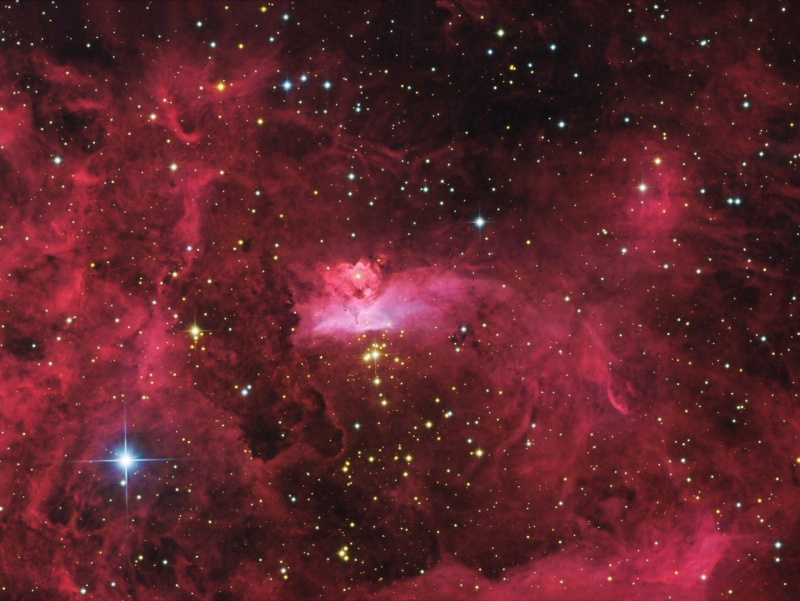
|
Credit & Copyright: Johannes Schedler
(Panther Observatory)
Explanation:
Massive Stars lie
within NGC 6357,
an expansive emission nebula complex
some 8,000 light-years away in the tail of the constellation
Scorpius.
In fact, positioned just below center in
this close-up view of
NGC 6357, star cluster Pismis 24 includes
some of the most massive stars known
in the galaxy,
stars with over 100 times the mass of the Sun.
The nebula's bright central region also contains dusty pillars of
molecular gas, likely hiding massive protostars from the
prying eyes
of optical instruments.
Intricate shapes in the nebula are carved by interstellar winds
and energetic radiation from the young and newly forming
massive stars.
This alluring telescopic view spans just under 50 light-years at
the estimated distance of NGC 6357.
|
January February March April May June July August September October November December |
| ||||||||||||||||||||||||||||||||||||||||||||||||
NASA Web Site Statements, Warnings, and Disclaimers
NASA Official: Jay Norris. Specific rights apply.
A service of: LHEA at NASA / GSFC
& Michigan Tech. U.
Based on Astronomy Picture
Of the Day
Publications with keywords: star formation - emission nebula
Publications with words: star formation - emission nebula
See also:
- APOD: 2025 December 9 B The Heart of the Soul Nebula
- APOD: 2025 September 19 B The NGC 6914 Complex
- APOD: 2025 September 10 B The Great Lacerta Nebula
- APOD: 2025 July 21 B Cats Paw Nebula from Webb Space Telescope
- APOD: 2025 July 16 B The Rosette Nebula from DECam
- APOD: 2025 July 10 B Lynds Dark Nebula 1251
- APOD: 2025 July 5 B Ou4: The Giant Squid Nebula
